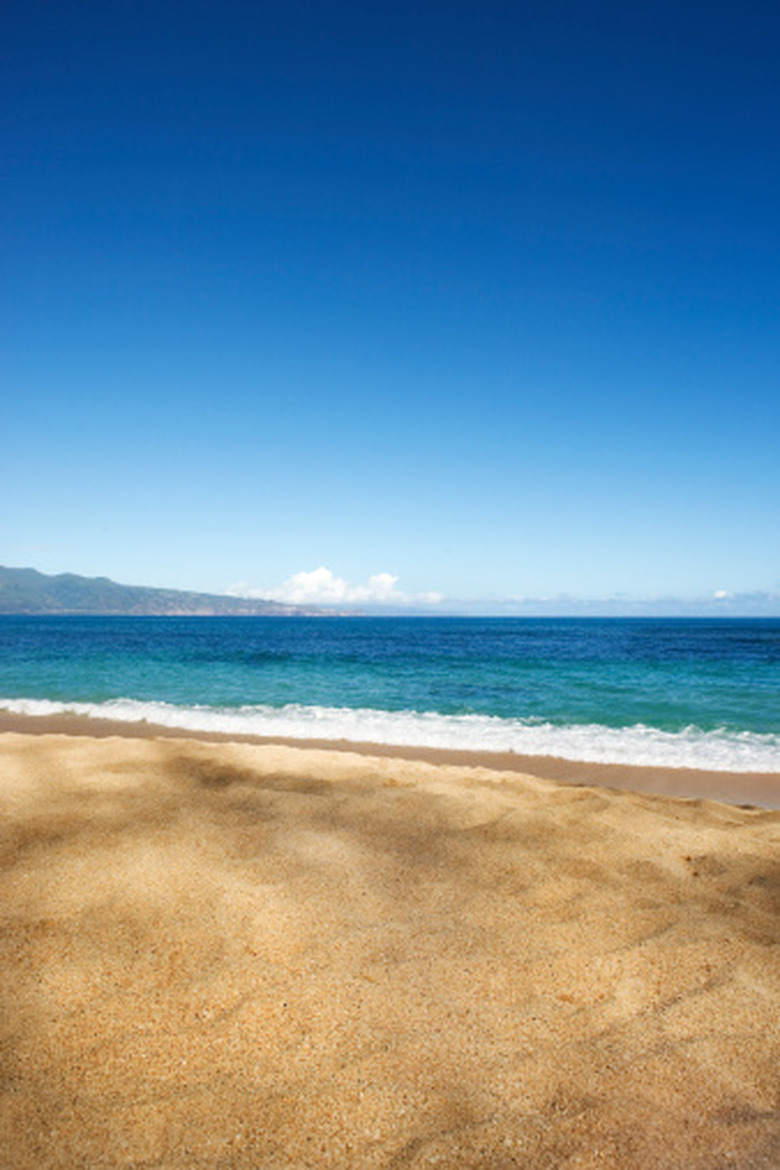What Is The Primary Force That Causes The Seafloor To Spread?
The bottom of the ocean, also known as the seafloor, isn't simply lying stagnant at the depths. The seafloor shifts and changes, particularly in certain regions where separate tectonic plates meet. What causes change in the sea floor? What causes seafloor spreading and what are the resulting landforms that it leaves behind?
Why Does the Earth's Surface Move?
Why Does the Earth's Surface Move?
Though you might not feel it, the ground beneath your feet undergoes constant – albeit minuscule – movement and change. This is because the Earth's surface is made up of many separate sections known as tectonic plates. Tectonic plates are massive slabs of the lithosphere that "float" along the molten mantle of the Earth.
These plates are dynamic and interact with one another in several different ways. Movements at the boundaries of these plates result in changes to the surface of the planet, and they can create or destroy the crust of the planet depending on how they interact with one another. Oceanic boundaries that move away from one another result in seafloor spreading.
What Causes Seafloor Spreading?
What Causes Seafloor Spreading?
Seafloor spreading is essentially exactly what it sounds like. Two sections of the seafloor spread away from one another. This occurs through the movement and shifting of the tectonic plates under the ocean. A divergent boundary is a boundary between tectonic plates where the plates move away from one another – resulting in seafloor spreading in an oceanic setting.
Some tectonic plates move quickly, and some move slowly. The speed of plate movement can impact the types of landforms that arise from seafloor spreading.
Seafloor Spreading and the Mid-Ocean Ridges
Seafloor Spreading and the Mid-Ocean Ridges
When two tectonic plates move away from one another, they leave a gap for the molten rock in the mantle to rise to the surface. The ocean quickly cools this magma, creating solid rock and new crust on the surface of the Earth. It is the rising magma and eventual new crust that creates mid-ocean ridges – areas of jutting underwater cliffs and mountain ranges – along these oceanic tectonic boundaries.
When the seafloor spreads slowly, the magma forces itself upward more drastically. This creates taller, more dramatic mountain ranges and cliffs. One example of a slow-spreading ridge is the Mid-Atlantic Ridge, which spreads at a maximum of 2 inches per year. The Mid-Atlantic ridge marks the boundaries between the Eurasian and North American tectonic plates and the African and South American tectonic plates.
Conversely, when the seafloor spreads rapidly, the magma emerges more evenly. Thus, rapidly spreading plates create more gently sloping ridges without as dramatic and jagged mountain ranges. The East Pacific Rise is an example of a rapidly spreading seafloor, spreading at a maximum of 6 inches per year.
What Are the Other Types of Plate Boundaries?
What Are the Other Types of Plate Boundaries?
The Earth's tectonic plates move in several different fashions. Plates can spread apart, as you see in seafloor spreading with divergent plate boundaries. However, two other types of plate boundaries also exist: convergent plate boundaries and transform plate boundaries.
At a transform plate boundary, two tectonic plates slide past one another. These boundaries, commonly referred to as faults, often result in earthquakes and the cracking of crust and rock. An example of a transform plate boundary is the San Andreas Fault.
At convergent plate boundaries, two tectonic plates collide with one another. The colliding plates can interact in different fashions. At these boundaries, one plate pushes beneath the other plate in a process known as subduction. The collision between the two plates results in the crust from one or both of the plates buckling and forming mountain ranges. Volcano chains are also common along these boundaries.
Cite This Article
MLA
Zinni, Yasmin. "What Is The Primary Force That Causes The Seafloor To Spread?" sciencing.com, https://www.sciencing.com/primary-force-causes-seafloor-spread-8655103/. 1 December 2021.
APA
Zinni, Yasmin. (2021, December 1). What Is The Primary Force That Causes The Seafloor To Spread?. sciencing.com. Retrieved from https://www.sciencing.com/primary-force-causes-seafloor-spread-8655103/
Chicago
Zinni, Yasmin. What Is The Primary Force That Causes The Seafloor To Spread? last modified March 24, 2022. https://www.sciencing.com/primary-force-causes-seafloor-spread-8655103/
